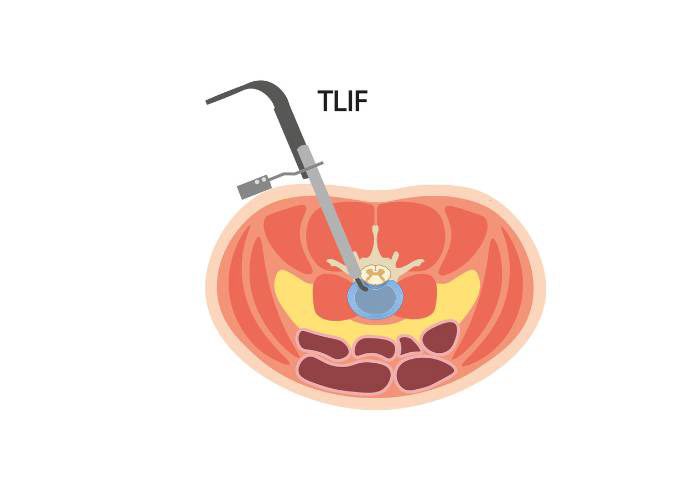TLIF Surgeon

Transforaminal lumbar interbody fusion is a type of spinal surgery that fuses two spinal bones (vertebrae) together. A TLIF is used to treat degenerative disc disease, herniated disc, or spondylolisthesis. TLIF surgeon, Doctor Brenton Pennicooke, provides diagnosis as well as surgical and nonsurgical treatment options for patients in Saint Louis, Creve Coeur, and surrounding cities in St. Louis, St, Peters, Creve Coeur and surrounding cities in St. Louis county and St. Charles county, Missouri who are suffering from low back pain. Contact Dr. Pennicooke’s team today to see what treatment is best for your spinal condition!
What is transforaminal lumbar interbody fusion or TLIF?
Transforaminal lumbar interbody fusion is a type of spinal surgery that fuses two spinal bones (vertebrae) together. The foramen is a small open space that is found between the vertebrae of the spine. Transforaminal, meaning across the foramen, describes the space that is accessed during surgery in order to fuse 2 vertebrae together. Interbody fusion describes connecting or fusing two vertebral bones (bodies). Brenton Pennicooke, MD, board-certified spinal neurosurgeon, treats patients in St. Louis, St, Peters, Creve Coeur and surrounding cities in St. Louis county and St. Charles county, Missouri, who may need a transforaminal lumbar interbody fusion due to a herniated disc in the lower back or lumbar spine.

Which spinal conditions can be helped with a TLIF?
TLIF may be used to treat conditions including:
- Degenerative disc disease
- Herniated spinal discs: where the spinal disc “slips” out of place and compresses the spinal cord.
- Spondylolisthesis: a condition where a vertebrae bone slides over the top of another.
- To address a previous spine surgery that has failed to provide symptom improvement.
How is TLIF or transforaminal lumbar interbody fusion done?
During a TLIF a portion of the spinal bone will be removed so that the intervertebral disc can be visualized. This disc will be removed using special surgical tools and techniques and replaced with a spacer (made out of metal or man-made material) that will allow 2 vertebrae to fuse together. Next, this space will be filled with additional bone fragments that promote new bone growth in the area. The two spinal vertebrae are then stabilized using surgical screws and rods, which provide support as new bone grows and fills in the space. Finally, the skin will be closed using surgical sutures to complete the TLIF procedure.
How long does it take to recover from a transforaminal lumbar interbody fusion (TLIF) surgery?
Immediately following a TLIF procedure, patients typically spend 1 to 3 days in the hospital. However, some patient may require a more extended recovery based on their age and medical comorbidities. During the hospitalization, the patient will undergo physical therapy. Physical therapy is critical to regaining strength, motion, and flexibility in the spine and aid in the recovery process.
Some patients with softer bones may be asked to wear a back brace for 2 to 3 months after TLIF surgery.
Lifting, bending, or twisting should be avoided for at least 2 to 3 months after surgery; however, most patients can return to work after about 6 weeks. Dr. Pennicooke will follow up with each patient in the office with appointments beginning about 6 weeks after surgery.
The time it takes to fully recover from TLIF surgery will vary from person to person. Most patients will begin to feel fully recovered after approximately 3 to 4 months. However, Dr. Pennicooke will provide each patient with an individualized timeline for recovery based on their injury, medical conditions, and surgery.
What are the potential benefits of TLIF or transforaminal lumbar interbody fusion?
There are many potential benefits of the TLIF procedure, including:
- Reduction in back and/or leg pain
- Spinal instability
- Improved function and quality of life
- Reduction of needed pain medication
- Improved ability to participate in physical activities
- Prevention of further deterioration in the spinal discs or vertebrae
Specific benefits vary for each patient. Dr. Pennicooke will help to provide more specific, individualized benefits for each patient.